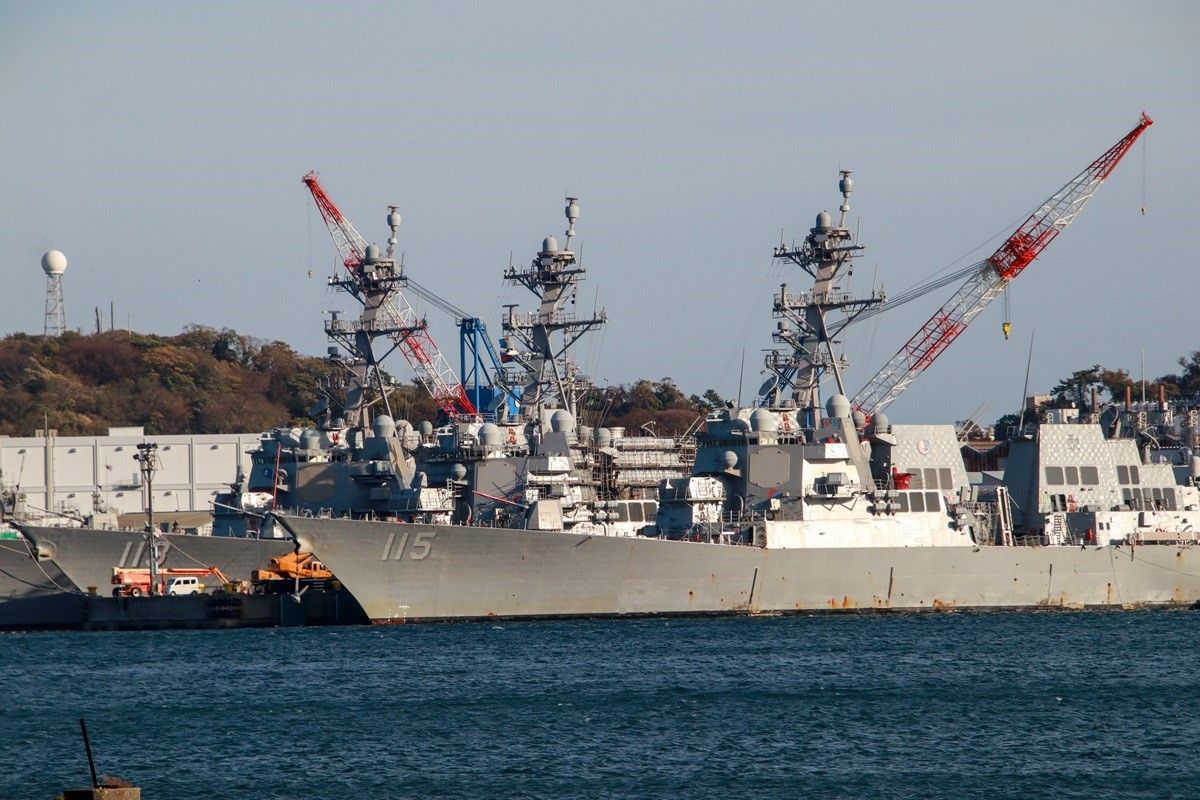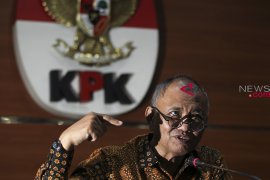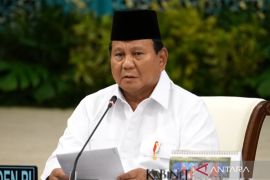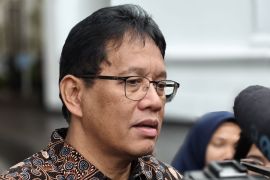One interesting and ambitious idea, proposed by the Anies Baswedan-Muhaimin Iskandar pair, is the expansion of the Indonesian Navy (TNI AL) into a blue water navy.
This commitment is enshrined in the presidential and vice presidential pair number one's vision and mission statement for TNI, which pushes for the "strategic deployment of forces from Sabang to Merauke, supported by a flexible and adaptive army, a navy developed into a blue water force, and an automated air force capable of achieving air supremacy."
The commitment to build a blue water navy provides an interesting point for analysis.
First of all, what is a blue water navy? Currently, there are multiple definitions of the term. However, generally speaking, it refers to a navy that is capable of carrying out sustained operations in the world's oceans, far from its home waters.
Compared to lesser green water and brown water navies, the defining characteristic of blue water navies lies not in their ability to sail far from home waters, but in their ability to sustain such operations over a period of time.
Given their ability to conduct sustained operations far from home waters, blue water navies allow countries to project power and influence far beyond their own shores.
However, not all blue water navies are built the same. Some blue water navies have greater reach and operational capability compared to others, with some having power projection capability of a global scale, and others more limited to regional power projection.
Useful classification
Naval scholars Daniel Todd and Michael Lindberg have devised a useful classification to depict the varying hierarchy of naval capability based on a 10-rank system.
Under this system, navies ranked 1–4 are considered blue water navies, with navies ranked 1–2 possessing complete or partial global power projection capability, and navies ranked 3–4 limited to regional or multi-regional power projection.
The rest, ranks 5–10, are not considered blue water navies possessing capabilities limited to riverine or in-shore constabulary roles at the lower end of the scale, and offshore defense into and slightly beyond the exclusive economic zone (EEZ) on the upper end of the scale.
In view of this, the Anies Baswedan-Muhaimin Iskandar pair's campaign promise to build a blue water navy for Indonesia raises some questions. The most notable one is: What kind of a blue water navy do they envision to build and for what role?
Based on the Todd-Lindberg classification, it is known that blue water navies are of four different ranks. Rank 1, which signifies complete global power projection, is currently only held by the US Navy.
As a global superpower, the United States possesses military, political, and economic interests in multiple regions of the world. It is striving to counter a rising China in Asia, a resurgent Russia in Europe, and an ever-expanding Iranian influence in the Middle East.
At the same time, as a major trading nation, the United States also has a vital interest in ensuring the free flow of global trade, which primarily relies on maritime trade. It is, therefore, clear as to why the US has built a global power projection blue water navy.
To fulfill the globe-spanning military, political, and economic interests it currently holds, the United States must build and maintain a rank 1 blue water navy with matching global power projection capability.
The same cannot be said for Russia, which currently possesses a rank 3 multi-regional power projection blue water navy.
Unlike the US, Russia's vital interests are closer to home, primarily around the territories of ex-Soviet republics, Eastern Europe, as well as adjacent regions such as the Mediterranean Sea and the Middle East.
Russia is also not a major trading nation, and thus, it has less vital interest in keeping global maritime trade routes secure compared to the US. Consequently, it has built and is maintaining a rank 3 blue water navy, which allows it to project power into adjacent regions beyond the EEZ, in addition to homeland defense.
In practice, this can be seen by the permanent task force of Russian naval ships deployed into the Mediterranean Sea to support power projection in the Middle East, in addition to traditional homeland defense and strategic deterrence role carried out by the Northern, Pacific, Baltic, and Black Sea Fleets of the Russian Navy.
From those two examples of blue water navies, it is clear that the type of blue water navy operated by countries is highly influenced by the military, political, and economic objectives that each country wishes to achieve.
What is Anies' goal?
This brings us back to the question of Anies's goal for building a blue water navy. If he wishes to build a blue water navy for Indonesia, then what sort of military, political, and economic objectives does he envision to achieve that would necessitate such a step in the first place?
Looking at the vision and mission of the Anies-Muhaimin pair in the realm of foreign policy, they are seeking to position Indonesia as a balancing force in the global order that can prevent domination by certain countries, which may be detrimental to developing and non-bloc countries.
In addition, they aim to assert Indonesia's position as a regional power in the Indo-Pacific. While these two points indicate a desire for Indonesia to take on a more active role, both regionally and globally, how this would translate into tangible military, political, and economic objectives to serve as a basis for the development of a blue water navy is still unclear.
Indonesia currently holds little vital national interest globally that necessitates a blue water navy. However, there have been past instances in which having blue water capabilities could have been useful for Indonesia in responding to security issues arising beyond its borders.
In this context, two main scenarios come to mind: the first is responding to the piracy threat involving Indonesian ships in the high seas, and the second is assisting in the evacuation of Indonesian nationals stuck in conflict zones.
The hijacking of Indonesian cargo vessel MV Sinar Kudus in 2011 and the subsequent military operation to liberate it was the Indonesian Navy's first foray into long-range military operations.
Responding to the hijacking, the Indonesian government dispatched two frigates and one landing platform dock along with several hundred marine and army personnel for a rescue operation.
While the ship was eventually liberated after 1.5 months of negotiations and military pressure, it can also be argued that had Indonesia possessed a blue water navy at that time, with sustained deployments off the coast of Somalia for anti-piracy operations, then the hijacking might have been resolved far more quickly.
This relates to the second scenario of evacuating Indonesian nationals stuck in conflict zones. Having readily available military forces in the vicinity of a conflict zone adds further options for the Indonesian government should it be faced with the need to quickly evacuate Indonesian nationals.
For example, an Indonesian naval task force deployed in the Gulf of Aden for anti-piracy operations might have also proved useful in supporting the evacuation of Indonesian nationals from Sudan in 2023.
If the foreign military, political, and economic goal that comes to mind for Indonesia revolves around protecting maritime trade from piracy, as well as safeguarding Indonesian nationals in conflict zones, then building a rank 1 or 2 global power projection blue water navy is unnecessary.
Instead, a regional power projection navy, meaning a rank 3 or 4 may be more fitting for Indonesia's blue water navy aspirations. This decision can be narrowed down further.
The main difference between a rank 3 and 4 blue water navy is the presence of fixed-wing light aircraft carriers (CVL) that allow a rank 3 navy to operate away from the cover of land-based aircraft in high-intensity conflict scenarios — unlike a rank 4 navy that must stay within the range of land-based aircraft.
However, if Indonesia's foreign military, political, and economic goals mainly revolve around anti-piracy efforts and evacuation of citizens from conflict zones, the likelihood of it being engaged in high-intensity conflicts abroad is low.
Thus, a rank 4 blue water navy may be a fitting choice for Indonesia, since the likely scenarios for which the navy will be deployed abroad would not necessitate the presence of fixed-wing aircraft carriers.
Blue water navy vs A2/AD approach
In the end, is building a blue water navy a prerequisite for Indonesia to have a strong defense capability?
The answer is no. Even without a blue water navy, there are still other ways for Indonesia to develop its navy into a powerful tool for defending its territorial integrity.
Even with its shortcomings, the current Indonesian Navy ranks quite favorably in the Todd-Lindberg naval hierarchy: it is classified as a rank 5 regional offshore coastal defense navy.
Instead of building blue water capabilities, Indonesia could seriously focus on strengthening its offshore coastal defense capabilities, particularly by adopting an anti-access/area denial (A2/AD) approach.
The end result will still be a powerful navy. While such a navy may lack in long-range power projection, it will still be strong enough for defending Indonesian territory, presenting a credible threat even against other blue water navies intending to intrude upon Indonesian waters.
As a closing note, one important point that must be remembered is that navies in the end are merely tools for a government to achieve its military, political, and economic goals.
Any decision on the type of navy that should be built, including the composition of ships within its fleets, must always be aligned to support the achievement of those goals.
*) Muhammad Teguh Ariffaiz Nasution, Graduate Student of Strategic Studies, Australian National University (ANU)
The views and opinions expressed on this page are those of the author and do not necessarily reflect the official policy or position of ANTARA News Agency.
Copyright © ANTARA 2024











